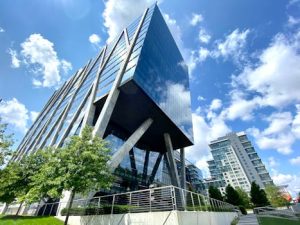Circular Economy in Real Estate: Recycling Materials for Sustainable Builds
In today’s world, there is an increasing emphasis on sustainability and environmentally-friendly practices. As a result, many industries are looking for ways to reduce their carbon footprint and make more conscious choices when it comes to resource usage. One such sector that is making waves in this regard is the real estate industry. With a growing focus on green buildings and sustainable construction, the concept of Circular Economy in Real Estate has gained immense attention. In this article, we will delve deeper into this topic and look at how recycling materials can lead to sustainable builds in the real estate sector.
The Concept of Circular Economy in Real Estate
The traditional linear economy model follows a “take-make-dispose” approach, where resources are extracted, used, and then discarded. On the other hand, the circular economy model focuses on the reuse, repair, and recycling of materials, creating a closed-loop system that eliminates waste and maximizes resource efficiency. This model has gained widespread recognition in the real estate sector, with many builders and developers incorporating circular economy principles in their projects.
Recycling Materials for Sustainable Builds
The construction industry is known for its significant impact on the environment, with the production of building materials consuming vast amounts of energy and resources. According to the United Nations Environment Programme, the construction sector is responsible for 38% of global carbon emissions. However, by implementing circular economy practices, the industry can significantly reduce its environmental impact.
Reducing Waste
The circular economy model advocates for the reuse and recycling of materials, reducing the amount of waste that ends up in landfills. In the real estate sector, this can be achieved by using recycled materials in construction, such as reclaimed wood, recycled plastic, and crushed concrete. By doing so, builders and developers can save on costs while also preserving natural resources.
Energy Efficiency
Circular economy principles also promote energy efficiency in buildings by designing them to use renewable energy sources and implementing energy-efficient systems. The use of renewable resources, such as solar panels and geothermal heating, can lower a building’s carbon footprint and reduce its dependence on non-renewable energy sources.
Adaptive Reuse
Another way circular economy is transforming the real estate sector is through adaptive reuse. Instead of demolishing old buildings, developers are now repurposing and renovating them for new uses. This not only saves on resources but also preserves historical and architectural significance, adding value to the community.
The Benefits of Circular Economy in Real Estate
Environmental Benefits
Recycling materials for sustainable builds has a significant positive impact on the environment. By reducing waste and maximizing resource efficiency, circular economy practices help mitigate carbon emissions and reduce the depletion of natural resources. Additionally, using renewable energy sources in buildings also helps combat climate change.
Economic Benefits
With the rising costs of construction and the depletion of natural resources, circular economy practices in real estate offer long-term economic benefits. By reducing waste and reusing materials, builders can save on costs and increase their profit margins. Also, energy-efficient buildings have lower operating costs, making them more attractive to potential buyers or tenants.
Conclusion
Circular Economy in Real Estate is more than just a buzzword. It is a necessary shift towards sustainable practices that benefit both the environment and the economy. By recycling materials and implementing circular economy principles, the real estate industry can reduce waste, cut costs, and make a positive impact on the planet. As consumers, we can also play our part by supporting builders and developers who prioritize circular economy practices in their projects, creating a more sustainable future for generations to come.










